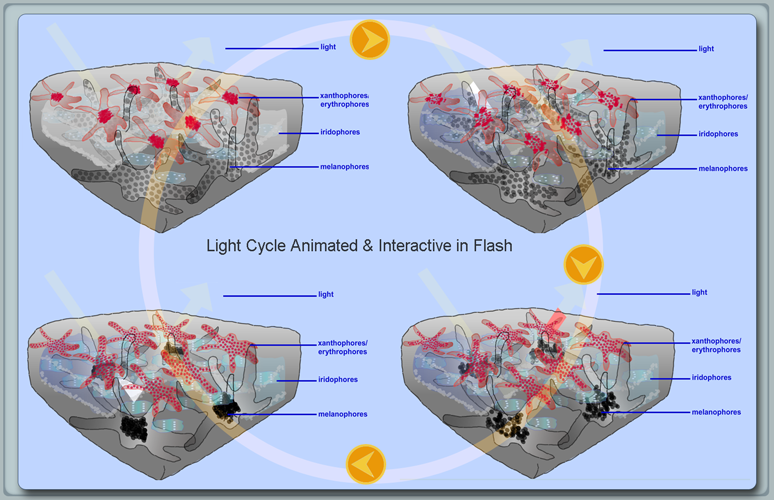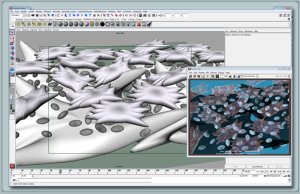Stella Richard, Professor of Veterinary Science, asked me to create an interactive element for her dissertation on chromatophores. My particular task was to focus on the migration of various chromatophores in a fish’s dermis during periods of perceived color change from grey to red and/or iridescence. I used two methods to convey this change — one was an interactive Flash application allowing the user to experiment with the process as light passed through the skin prior, during, and after the chromatophores’ change. The second was a 3d rendered animation of the process using particle emitters in Autodesk Maya. This approach required a considerable amount of rendering power [in 2010], but did allow for a more realistic visualization of the chromatophores.
Using Autodesk Maya, I created individual 3D models for each type of chromatophore. Within each, depending on whether it was a xanthophore, iridophore, erythrophore, or melanophore, I placed various emitters with alterable properties including ramp coloration, paticle size and shape, and collision wall depth. I also designed a unique texture and light map for each type of chromatophore in order to produce variations in hue, material type, and a sense of depth. Rendering consisted of multiple passes in order to catch lighting nuances. The animation consisted of forward and reverse emission to represent the translocation stages from scattered to centralized and vice versa.

